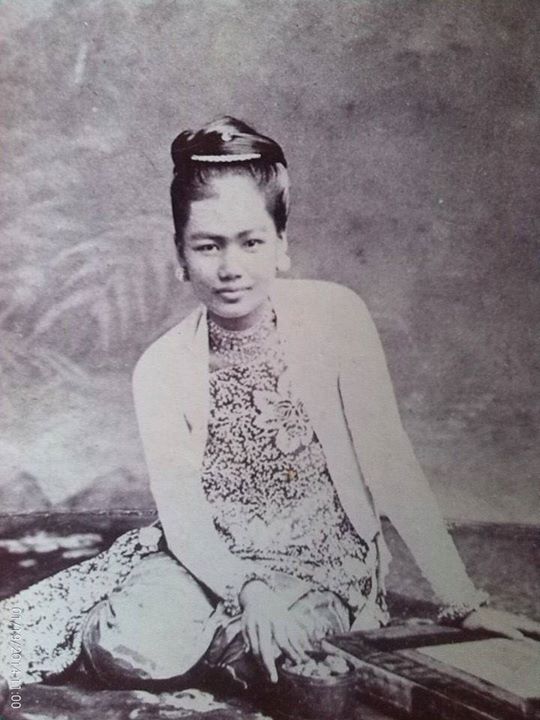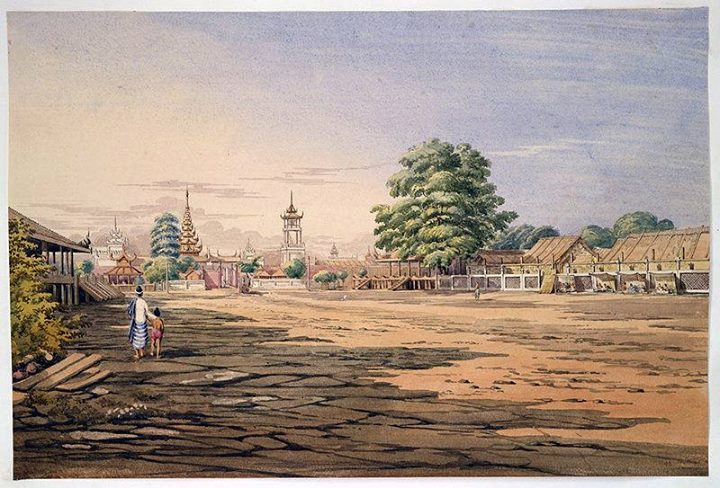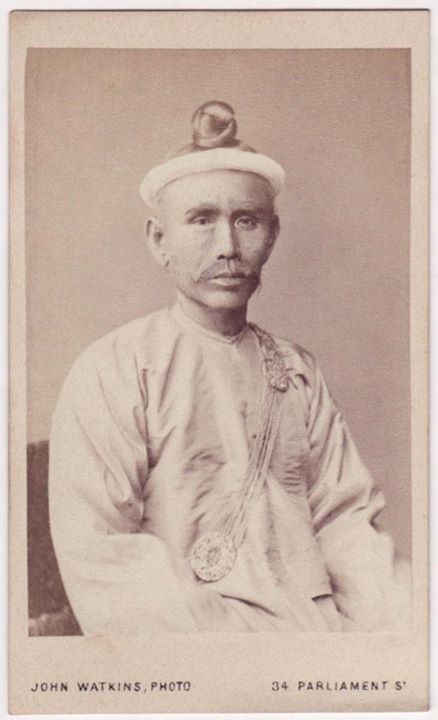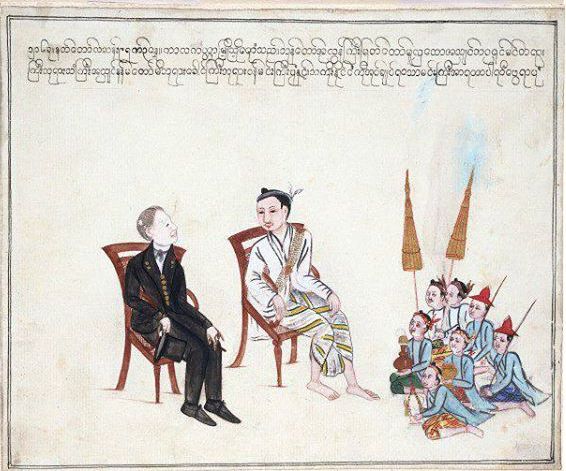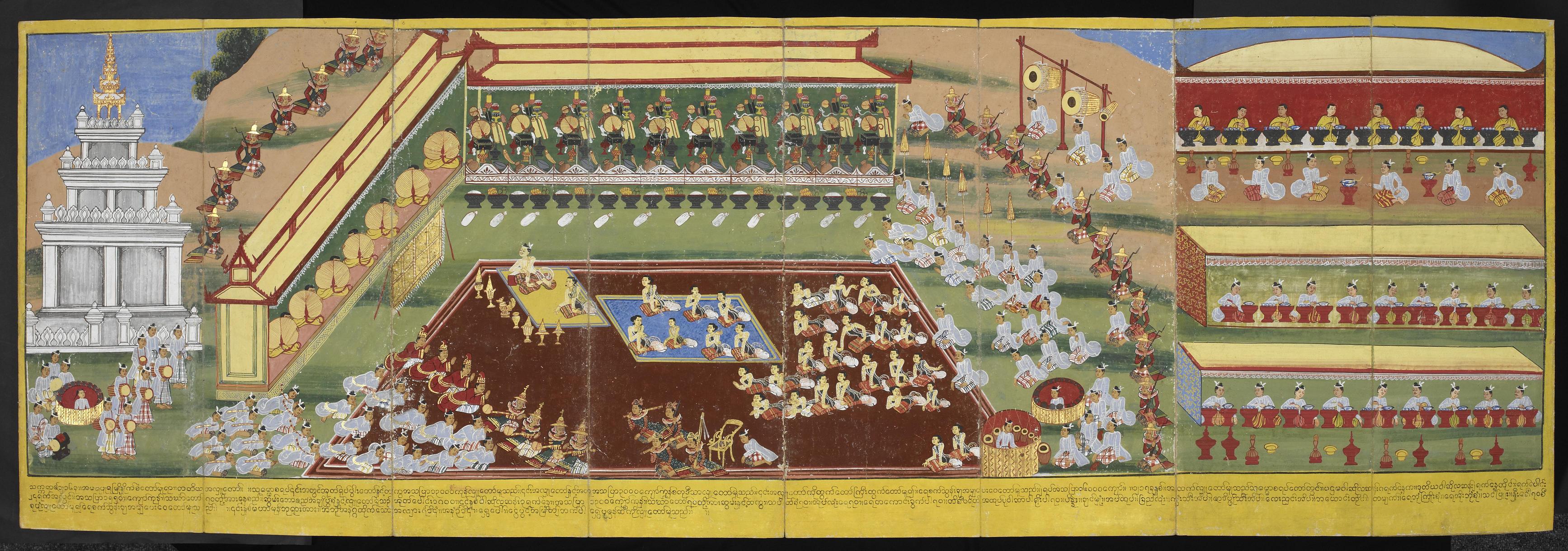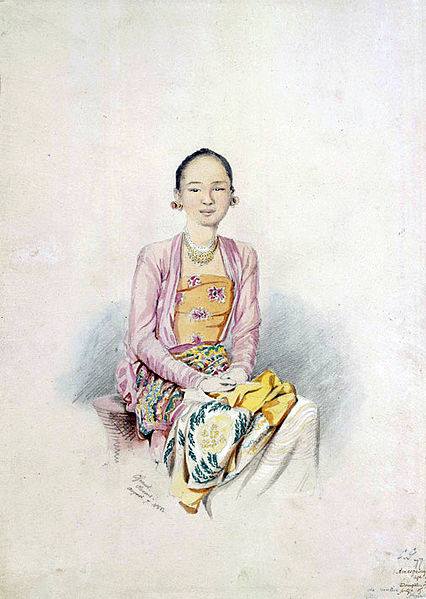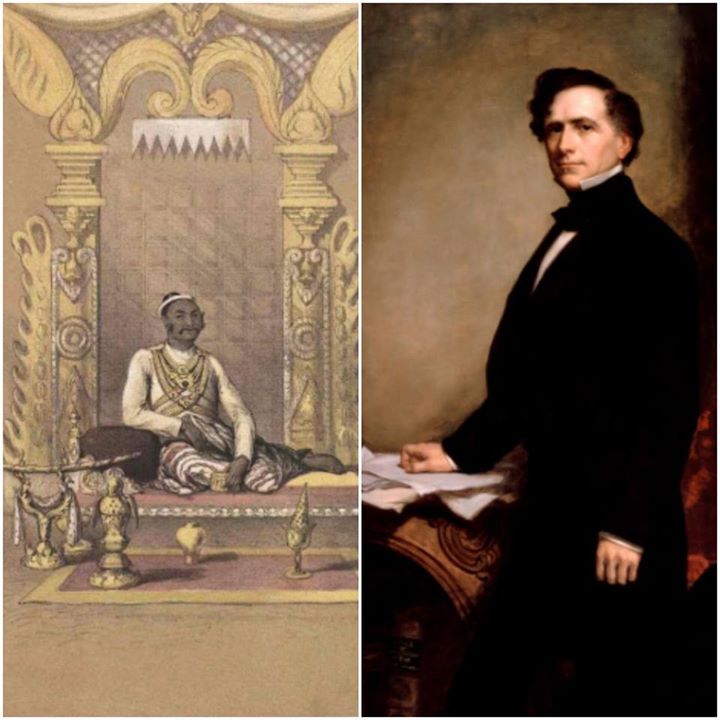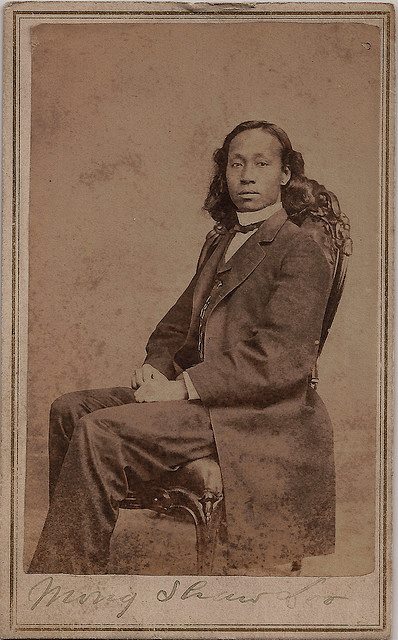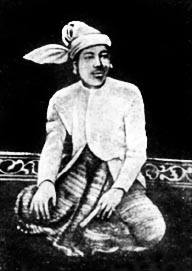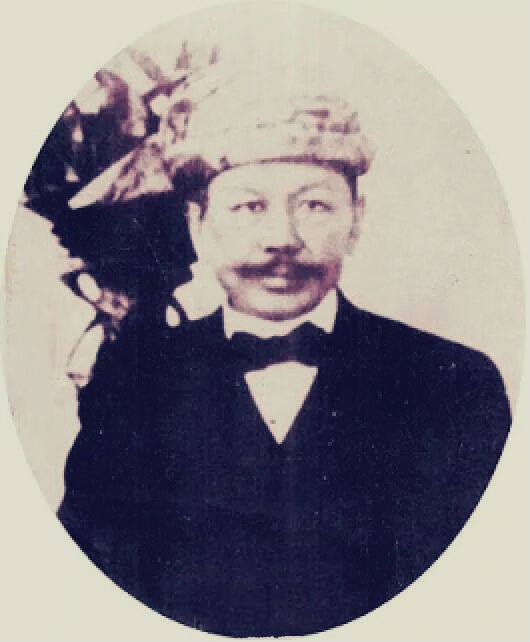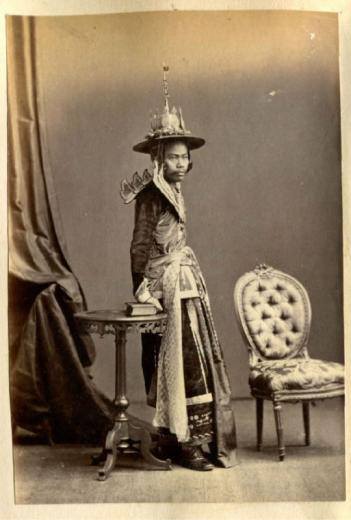King Mindon
A favourite daughter of King Mindon: the Princess of Naungmon.
The Princess of Natmauk and Naungmon (Natmauk Naungmon Minthami) was the daughter of King Mindon and his consort Tharazin Myoza Minbura. Eventually she was raised to the title Suriya Mallavadi and then promoted to Sri Padma Devi. Born at the palace in Mandalay in 1859, she died in Rangoon during the British occupation. This portrait was taken at Mandalay palace in the early 1880s when she was in her 20s.
Read MoreAmarapura
Amarapura was founded on 13 May 1783 by King Bodawpaya. With 53 official wives and 120 children, King Bodawpaya, fifth son of Alaungpaya, was 38 years old when he founded the new citadel. At the time, the Konbaung dynasty was then less than a quarter century old and at the very height of its power. Amarapura is a Pali word meaning "immortal city". "Amara" is a cognate of Latin "immortalis" or "immortal"; "pura" a cognate of Germanic "burg", English "borough"...
Read MoreKinwun Mingyi
The Kinwun Mingyi U Kaung (3 February 1822 – 30 June 1908) was Burma (Myanmar)’s leading reformer in the 1870s and early 1880s. He was a scholar, diplomat, and the author of numerous works of literature, history, and jurisprudence. Like many in his generation, his vision was of a modern, independent Burma, that would mix the best of the old and the new, importing the latest ideas and technology, whilst also protecting and preserving centuries old traditions. The Kinwun Mingyi...
Read MoreSir Arthur Phayre and the Myoza of Magwé in Calcutta
This watercolour depicts Sir Arthur Phayre and the Myoza of Magwé in Calcutta 1854. In the early years of his reign, King Mindon tried desperately to persuade the British to return Lower Burma, which had been seized during the Second Anglo-Burmese War (1852-53). In 1854 he sent one of his most powerful ministers the Myoza of Magwé (a minister to the very influential senior queen) as his envoy to the Marquess of Dalhousie, then Governor-General of India. The Magwé Myoza...
Read MoreThe Penultimate King
King Mindon making a donation at the Mahamuni pagoda in Mandalay. King Mindon is remembered by many Burmese as the country's last great king and among the most devout patrons of Buddhism ever. He convened the Fifth Great Buddhist Synod in 1871, which was billed as the first of its kind in two thousand years, bringing together 2,400 monks, including several from overseas, in a grand attempt to review and purify the scriptures. Nor was his religious interest limited to...
Read More“Ameegalay”
This watercolour portrait of "Ameegalay" was by the British artist Colesworthy Grant in 1855. Ameegalay was the younger daughter of the Sitke (second-in-command of a military unit during the time of Burmese kings) of Prome. Colesworthy Grant was the official artist attached to Sir Arthur Phayre's 1855 mission to Amarapura and the court of King Mindon. Prome was one of their stops on the way from Rangoon to Amarapura.
Read MoreThe dawn of Myanmar-US relations
Official Myanmar-US relations began in 1856 with a letter from King Mindon (pictured on the left) to Franklin Pierce, the 14th President of the United States (pictured on the right). When the letter was written, King Mindon had just built his new city, Mandalay, and his modernization drive was then in full swing. Over the next 15 years King Mindon would try to reform all aspects of government, fundamentally changing the revenue system and reforming administrative structures; mint coins; send...
Read MoreThe first student from Myanmar to study in US
The first Burmese student to come to America (and perhaps the first Burmese ever in America) was Maung Shaw Loo, who travelled from his native Moulmein to Lewisburg, Pennsylvania in 1858, just before the American Civil War. This photograph of him was taken in the little town of Goshen, Indiana, c. 1865. In 1857, aged 17, Maung Shaw Loo left Burma to study in Calcutta. During the Indian Mutiny in 1858 he stowed away on a ship for America; when...
Read MoreKing Thibaw: the Last King of Burma
King Thibaw (1 January 1859-19 December 1916) was the last king of Burma. He was the 41st son of King Mindon and the Laungshe Queen, and the 11th king of the Konbaung dynasty with the regal title Thiri Pawara Ditya Lanka Wizara Nanda Yatha Tilawkadhipati Pandita Maha Dhamma Razadhiraza. He assumed the throne in October 1878, was deposed by the British in November 1885 and died in exile on 19 December 1916 at the age of 57. A controversial choice...
Read MoreThe assassination of the Prince of Kanaung
In August 1866, the course of Burmese history changed forever with the assassination of the Prince of Kanaung. The Kanaung Prince was the Crown Prince, the younger brother of King Mindon and also his partner in government. Together they set out to transform government, develop the economy, and defend the country's independence. It was a modernization programme that preceded what would be tried elsewhere, in Japan, Siam, Egypt, Vietnam. Under the Kanaung Prince's direction: dozens of students were sent to...
Read MorePrince of Myingun
The Prince of Myingun, on 2nd August 1866, rebelled against his father King Mindon, killing his uncle, the Prince of Kanaung and a number of high officials. His rebellion lasted several weeks and was crushed only after considerable bloodshed. The Prince of Kanaung had been the kingdom's leading reformer and his death crippled efforts to modernise the army and other royal institutions. This photograph of the Myingun Prince was taken in Saigon where he died in 1921. His sons, shown...
Read MoreThangyet Wun U Myu
This is a rare portrait of the Thangyet Wun U Myu (later styled Mingyi Minhla Maha Sithu Kyaw), a scion of an old family of Ava nobility and was one of the first Burmese to be educated in Paris. He obtained a degree in engineering at the École Centrale des Arts et Manufactures in 1868 and later returned for further study in France in the 1870s. U Myu cheld different posts in Mandalay, leading King Mindon's efforts to build the...
Read More